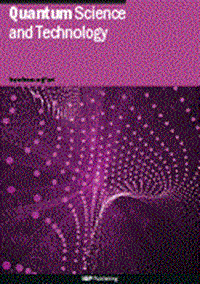Universal dissipators for driven open quantum systems and the correction to linear response
IF 5
2区 物理与天体物理
Q1 PHYSICS, MULTIDISCIPLINARY
引用次数: 0
Abstract
We investigate in parallel two common pictures used to describe quantum systems interacting with their surrounding environment, i.e. the stochastic Hamiltonian description, where the environment is implicitly included in the fluctuating internal parameters of the system, and the explicit inclusion of the environment via the time-convolutionless projection operator method. Utilizing these two different frameworks, we show that the dissipator characterizing the dynamics of the reduced system, determined up to second order in the noise strength or bath-system coupling, is composed of two parts. One is universal, meaning that it keeps the same form regardless of the drive term. This form constitutes the relevant part of the dissipator only as long as the drive is weak. We thoroughly discuss the assumptions on which this treatment is based and its limitations. Then, by considering the first non-vanishing higher-order term in our expansion, we derive the other, drive-dependent, term completing the full dissipator. This part of the dissipator, originating from the third cumulant, is usually neglected when modeling the decoherent dynamics of controlled qubits. However, this further term constitutes the linear response correction due to memory-mediated environmental effects in driven-dissipative quantum systems. Also, it notably shows that the structure of our quantum master equation goes beyond the Lindblad form. The Lindblad form is recovered for memory-less baths. Finally, we demonstrate this technique to be highly accurate for the problems of dephasing in a driven qubit and for the theory of pseudo-modes for quantum environments.驱动开放量子系统的通用耗散及对线性响应的修正
我们并行研究了用于描述量子系统与其周围环境相互作用的两种常见图像,即随机哈密顿描述,其中环境隐含地包含在系统的波动内部参数中,以及通过无时间卷积投影算子方法显式包含环境。利用这两种不同的框架,我们表明表征简化系统动力学的耗散体,在噪声强度或浴-系统耦合中决定到二阶,由两部分组成。一个是通用的,这意味着无论驱动项如何,它都保持相同的形式。只有当驱动较弱时,这种形式才构成耗散的相关部分。我们将彻底讨论这种治疗所基于的假设及其局限性。然后,通过考虑展开式中的第一个不消失的高阶项,我们导出了另一个与驱动相关的项,完成了完全耗散。在对受控量子比特的退相干动力学进行建模时,通常会忽略来自第三累积量的这部分耗散。然而,这个进一步的术语构成了由于驱动耗散量子系统中记忆介导的环境效应而引起的线性响应校正。此外,它还显著地表明,我们的量子主方程的结构超出了Lindblad形式。林德布莱德形式恢复为无记忆浴。最后,我们证明了这种技术对于驱动量子比特中的消相问题和量子环境的伪模式理论是高度精确的。
本文章由计算机程序翻译,如有差异,请以英文原文为准。
求助全文
约1分钟内获得全文
求助全文
来源期刊

Quantum Science and Technology
Materials Science-Materials Science (miscellaneous)
CiteScore
11.20
自引率
3.00%
发文量
133
期刊介绍:
Driven by advances in technology and experimental capability, the last decade has seen the emergence of quantum technology: a new praxis for controlling the quantum world. It is now possible to engineer complex, multi-component systems that merge the once distinct fields of quantum optics and condensed matter physics.
Quantum Science and Technology is a new multidisciplinary, electronic-only journal, devoted to publishing research of the highest quality and impact covering theoretical and experimental advances in the fundamental science and application of all quantum-enabled technologies.
 求助内容:
求助内容: 应助结果提醒方式:
应助结果提醒方式:


